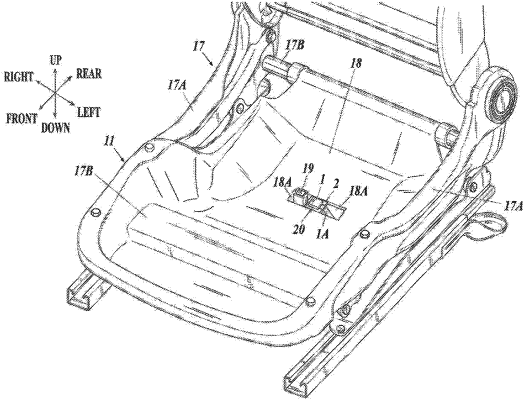| CPC B60N 2/686 (2013.01) [B60N 2/002 (2013.01); B60N 2/5621 (2013.01); B60Y 2400/306 (2013.01)] | 6 Claims |

|
1. A vehicle seat comprising:
a seat cushion including a seat cushion frame and a cushion pad disposed on the seat cushion frame; and
a sensor disposed under the cushion pad, wherein:
an air passage through which air passes is formed in the cushion pad;
the sensor is disposed so as to avoid a position directly under the air passage;
a through hole connects the air passage to outside the cushion pad;
the sensor is disposed so as to avoid a position directly under the through hole;
a duct is inserted in the through hole; and
the sensor is disposed in a position avoiding the duct.
|